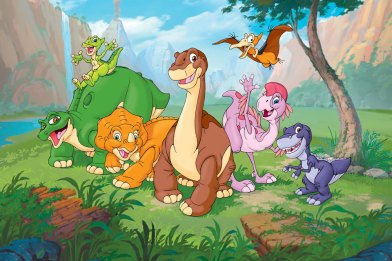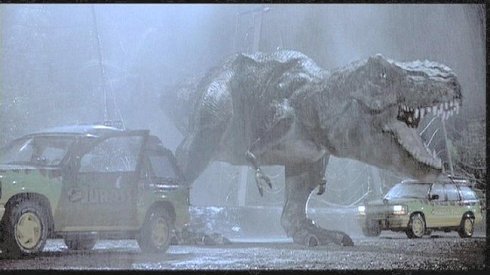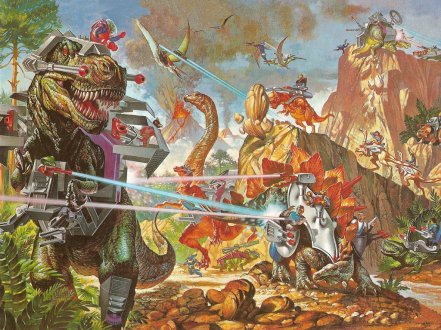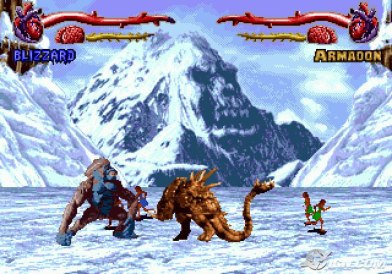Last time, I wrote about just how difficult it is to create a successful adaptation. The example I used was David Lynch’s Dune, a box-office bomb that failed to bring Frank Herbert’s epic vision to the big screen. Today, I’ll go through my personal favourite, least favourite and controversial adaptations – not just of novels, but of a variety of different media. I’m only picking five from each category, so since this is far from a definitive list.
The Good
Below are the best of the best: fantastic movies that managed to adapt the original source material without it leading to major detrimental changes to the plot, and that, at least mainly, avoided the wrath of either fans of the original or the creators themselves.
Blade Runner
Let’s get the obvious out of the way first, shall we? Blade Runner is a fantastic movie. Beautifully directed, expertly scripted, and with a huge number of iconic performances. It’s one of the best science fiction films ever made. What often gets overlooked, though, is just how well it was adapted into film. The original novel, Do Androids Dream of Electric Sheep? by Philip K. Dick, contains a myriad of different ideas that were excluded from Blade Runner, the most important being the religious movement of Mercerism. In spite of the big changes, Blade Runner stays true to the main plot of the novel, so much so that Philip K Dick, who lived only to see a test reel and read the screenplay, said that they had captured his “own interior world”.
Invasion of the Body Snatchers (1978), The Thing (1982), and The Fly (1986)
I may be cheating a little here by putting three films together, but these movies share a similar timeline: pulp science fiction stories, first adapted for cinema in the fifties, and then again in the seventies and eighties. I count these three films amongst the best horrors ever made, and I would say that they improve upon the original stories by making small changes: the setting and ending of Invasion of the Body Snatchers, the discovery of the alien in The Thing, and the transformation method of The Fly, for instance. Of the three, The Thing is actually the closest to the source material – and I’d suggest the original novella, Who Goes There?, to any science fiction fans looking for an underrated gem.
American Psycho
Reading American Psycho by Bret Easton Ellis is like being bludgeoned to death by an incredibly well-written brick. It’s a brutal and uncompromising critique of late 80s Wall Street ideals and is an important and powerful work of literature. It is dark, funny, ultra-violent and absolutely brilliant. It was given an equally controversial adaptation in 2000, starring Christian Bale. I mention Bale as he was the main reason why I think the adaptation works: an astute casting choice and an inch-perfect performance. The adaptation was relatively faithful to the novel, bar a few of the more gory moments, but somehow doesn’t quite have the same power as the book. That said, it is still an intelligent, funny, and thought-provoking movie.
Jurassic Park
This was once the most successful film ever made, and for good reason – the best special effects of the time, a bright and vibrant directorial style, and a story that was exciting for adults, but still family-friendly. And that is the biggest change that was made between the novel and the film. Michael Crichton’s Jurassic Park is quite a different beast: darker, longer, with more detailed scientific exposition.
Spielberg’s film streamlined the plot and cut a number of characters. The most interesting example is that of the lawyer, Gennaro. Rather than the weak, frightened character seen in the film, the Gennaro of the novel has a much more active role, and contributes a lot more to the plot. However, in the film Gennaro was combined with another character called Ed Regis.
LA Confidential
Curtis Hanson’s LA Confidential is a near-perfect film noir. It includes a smoky atmosphere, great performances (particularly those of Kim Basinger and Guy Pearce), is aesthetically wonderful, and most importantly has a genuinely intriguing and hard to decipher mystery. It’s a work of art, and is so good that the novel’s author James Ellroy counts it as one of his favourite crime movies. And Ellroy is a hard man to please; he was particularly scathing of another adaptation of one of his novels, The Black Dahlia.
The Controversial
The films below are those that deviated heavily from the subject matter, plot, or tone of their original material, and in doing so were heavily criticized by the original authors or fans of the intellectual property. In spite of that, I still consider them to be good films.
The Shining
“Wait, The Shining?” I hear you cry. “But that’s one of Kubrick’s greats!” Well, yes it is. But people didn’t always feel that way. The Shining was nominated for Razzies, and received a lot of negative reviews. Stephen King himself was highly critical of it, both because of the removal of large amounts of the supernatural and the way that Jack was built as an incredibly unsympathetic character from the off. Over time, both the critical reception and King’s own feelings on the film have softened, but at the time this was far from the controversy-free masterpiece that we know today.
Total Recall
Daft one-liners, extreme violence, nudity, explosions, and a hulking Austrian: Total Recall may well be Arnold Schwarzenegger’s best movie. It’s also another Philip K. Dick adaptation, this time of the short story We Can Remember It For You Wholesale. There are very few similarities between the two, however; you won’t find any three-breasted mutants or action-packed fights on the surface of Mars. The short story instead is much stranger, and like much of Dick’s work deals with the way that perception and reality differ. That said, I love both: Total Recall is a great action movie, and …Wholesale is a unique and interesting read.
Watchmen
I must confess that I love this film. It’s directed perfectly for a more fantastical comic book movie, the casting was excellent (particularly Jeffrey Dean Morgan as The Comedian), and, personally, I think that the changes made to the main plot work. I think Zack Snyder keeps the overall message of the film on-track and is as faithful as he could have been. I can also understand where the criticisms come from: gone are the wonderful, intertwining story arcs, the multimedia storytelling and the full development of some characters. Watchmen was always said to be ‘unfilmable’, and to an extent I agree – I think that Snyder did as well as anybody could do, and as it stands, I think he did a great job.
Willy Wonka and the Chocolate Factory
This film, with Gene Wilder in top form as the inscrutable sweet-maker Willy Wonka, is a cult classic. Loved by kids for its vibrant colours, dreamlike locations, and the wish fulfilment fantasy of owning a chocolate factory, not everyone was a fan. And by that, I mean Roald Dahl, the author of the original book, Charlie and the Chocolate Factory. Dahl, who was writing the screenplay but could not keep to deadlines, was absolutely furious with what the final film did to his novel, and afterwards refused to give over rights to a sequel.
The Lord of the Rings Trilogy
Peter Jackson’s The Lord of the Rings trilogy took $2,917 million at the box office and won 17 Oscars. But not everyone enjoyed the epic fantasy trilogy. There was huge criticism over changes made to characters, events, and themes of Tolkien’s original trilogy. In particular, the changes made to the characters of Merry and Pippin, and the cutting of the hobbits’ return to The Shire to find it under the control of Saruman, brought on the anger of Tolkien fans. As it stands, Peter Jackson’s trilogy is still one of the biggest achievements in film history – but perhaps not a true reflection of Tolkien’s fantasy series.
The Bad
Finally, here are the adaptations that just don’t work. Heavy deviation that is detrimental to the overall quality of the film, cluttered and unforgiving screenplays for the uninitiated viewer, and total thematic change are all included below.
Max Payne
This adaptation of the 2001 videogame should have been an automatic hit. The storyline, a mix of hard-boiled detective, corporate conspiracy, and good, old-fashioned action was perfect as it was, and game’s pulp, graphic novel art style meant that it really should have been an easy adaptation. Unfortunately, it fell into the trap that claims many a videogame film: over-complication of the story. Rather than stick to the watertight plot of the game, changes were made that turned Max Payne into a convoluted mess.
The Golden Compass
Philip Pullman’s His Dark Materials series has a number of complex themes right underneath the surface. Most important of all are the discussion of religion, and the development of children into adulthood through increased responsibility. All of this disappeared, though, in 2007’s adaptation. Worst of all, though, was the way in which Roger’s fate was changed – I don’t want to spoil it for anyone who has yet to read the novels, but it makes a dramatic difference to the tone of the story, and it was a change that really jarred with the original.
The Last Airbender
Avatar: The Last Airbender was one of the best kids TV shows in the last twenty years. It had deep, interesting characters, an interesting art style, a wonderful setting, and – most important of all – a completed and impressive story arc. Unfortunately, it did not convert well into a feature film. There was scathing criticism over the casting choices – Avatar was set in an Asian-influenced world yet the film had a primarily western cast – and over absolutely appalling dialogue, wooden characters, and a nonsensical plot.
We Need To Talk About Kevin
A controversial choice, this – but hopefully I can explain myself. We Need To Talk About Kevin received fairly good reviews upon its release, and the praise of Lionel Shriver. However, I feel it falls down by being thematically different from the original. I spent a large proportion of the book thinking about whether I believed my narrator; was she reliable? The framework of the novel was strong, as well: it was separated into different letters. Instead, the film gave us an unconventional, time-jumping structure and little hint that the film was showing anything other than the absolute truth. Although fantastic-looking, We Need To Talk About Kevin could not achieve the same effect as the original.
The Bonfire of the Vanities
Finally, here is the infamous The Bonfire of the Vanities. The novel by Tom Wolfe tapped into the political, social, and racial sentiments of 1980s New York – from the rich and powerful of Wall Street to the marginalised of Harlem and the Bronx. The film, though, was a huge box-office bomb. Part of the reason it failed to capture the same power as the novel was the casting choice of Tom Hanks as Sherman McCoy. McCoy, an intensely unlikable character in the book, was softened in an attempt to make him more likable. In the end, it meant that The Bonfire of the Vanities was a weakened-down comedy-drama, and a far cry away from the incisive original novel.
So, that was a brief look at what I consider to be some of the best, most controversial, and worst adaptations. Up next, I will take you through the adaptations that I would love to see happen.













